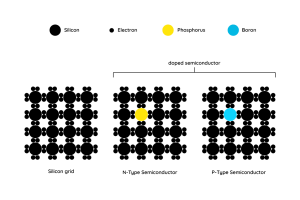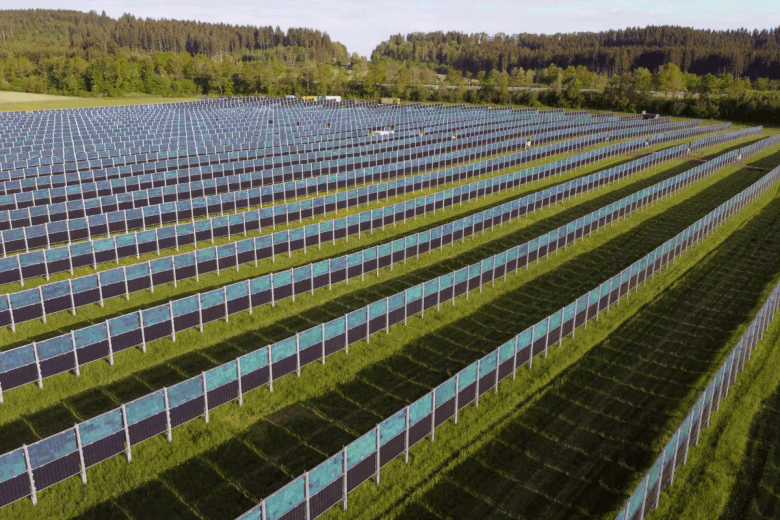Ground-mounted solar panels: the big step towards a successful project
Delivery delays, raw material shortages and lack of manpower! 2022 was indeed a turbulent year. We show you what impacts the current market situation has on ground-mounted photovoltaic projects and what helps you in the selection of solar modules.
Market overview: project trends
In the ground-mounted PV market in general, we see a trend towards larger projects. On the one hand, this is determined by the expansion paths of the European government, which promote the expansion of renewable energies by means of incentives. On the other hand, economies of scale come more into play with larger projects, an important factor for the profitability of a project.
According to the European Photovoltaic Industry Association (EPIA), large-scale solar power plants in Europe have seen significant growth in recent years. In 2020, the total installed capacity of large-scale solar power plants in Europe reached 23 GW. Most of these plants are in Spain, Italy, France and Germany. The size of large-scale solar power plants in Europe is expected to continue to grow with up to 60% in Europe by 2025. This growth is driven by increasing demand for renewable energy, the high prices of the fossil fuels, as well as the decrease in the costs of solar technology. Ground-mounted solar plants are now more popular than roof-mounted installations.
The Challenges
The ground-mounted PV market in general is project-specific and price-sensitive. Project planning can be complex, and there is an elaborate contractual structure with fixed production and feed-in dates behind it. This can often constrain installers to enter this market, especially when it comes to the first ground-mounted project for them. With a helping hand, these inhibitions can be overcome.
When planning these projects, several entities have to be coordinated, which requires good interaction. This includes, for example, the planning of staff, the planning of equipment as well as the procurement and coordination of goods.

Container-Ship at the port
Shortages of raw materials and postponed deliveries quickly disturbs this balance, which became apparent in 2022. If, for example, the delivery of the substructure is postponed but the modules are delivered, the assembly team cannot work. This results in idle time and higher costs.
Many manufacturers often require direct acceptance of the goods immediately after the order has been placed. If there is no intermediate buffer storage available, material cannot be kept in stock and sent to the project site at a short notice. The raw material problem also pushes for unforeseen product combinations which do not fit together ideally in terms of technology and price. Those who can fall back on a secure stock of goods and better warehouse management are at an advantage.
Our module technology of choice for ground-mounted solar panels
The quality of the products is also important for the efficiency of the solar system. In the case of ground-mounted modules, we are currently relying more and more on N-type technology. This technology delivers high yields, especially in low sunlight conditions and stands for a highly resistant cell technology. As the midday peak loading is becoming increasingly unpopular for the electricity market, N-type modules will have many advantages, as the low sunlight situation often occurs in the morning and evening hours.

Structure of an N-type (negatively charged) module vs P-type (positively charged) module
N-type cell technology is often used in bifacial glass-glass modules. This offers added value, especially for the Agrovoltaic systems, as the area can be used for both agriculture and electricity generation. The dual use of the area increases the land efficiency and other advantages, e.g. less evaporation due to the shade and protection against hail and frost.
We offer ground-mounted solar panels tested by the internationally recognised testing institute “PI Berlin”. This enables us to ensure that the quality and performance of the modules correspond to the manufacturer’s specifications.
Conclusion
The market for ground-mounted photovoltaic systems continues to grow and the trend is towards larger projects. The reasons for this are the better usable economies of scale and the improved efficiency of the PV systems. Today, significantly more yield can be generated on the same land area with more powerful modules than with a comparable project a few years ago.
For the projects, there are currently many challenges, starting with targeted planning, flexible product selection, right through to appropriate goods, workforce and equipment logistics. Product quality is also very important for the efficiency of the solar plant. We are increasingly using modules with N-type technology for ground mounted PV projects.
In summary
-
- Supply bottlenecks, raw material crisis, staff shortage: things are turbulent for the ground-mounted photovoltaic market.
- The trend in ground-mounted solar systems is towards larger projects.
- N-type technology stands for high yields, especially in low sunlight situation; electricity production in the morning and evening hours is becoming increasingly popular for direct marketing on the electricity market.


